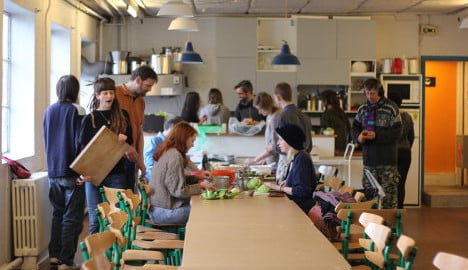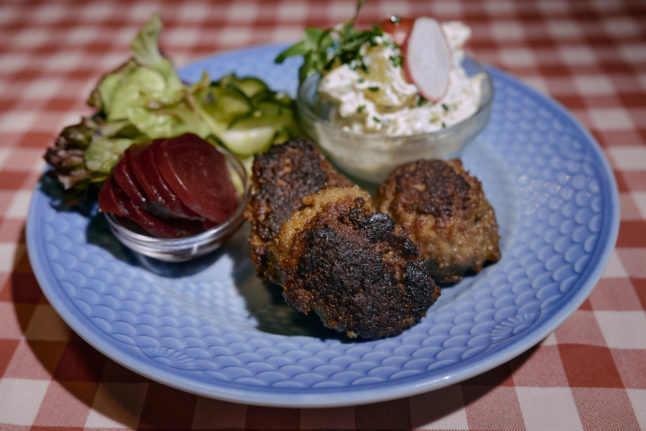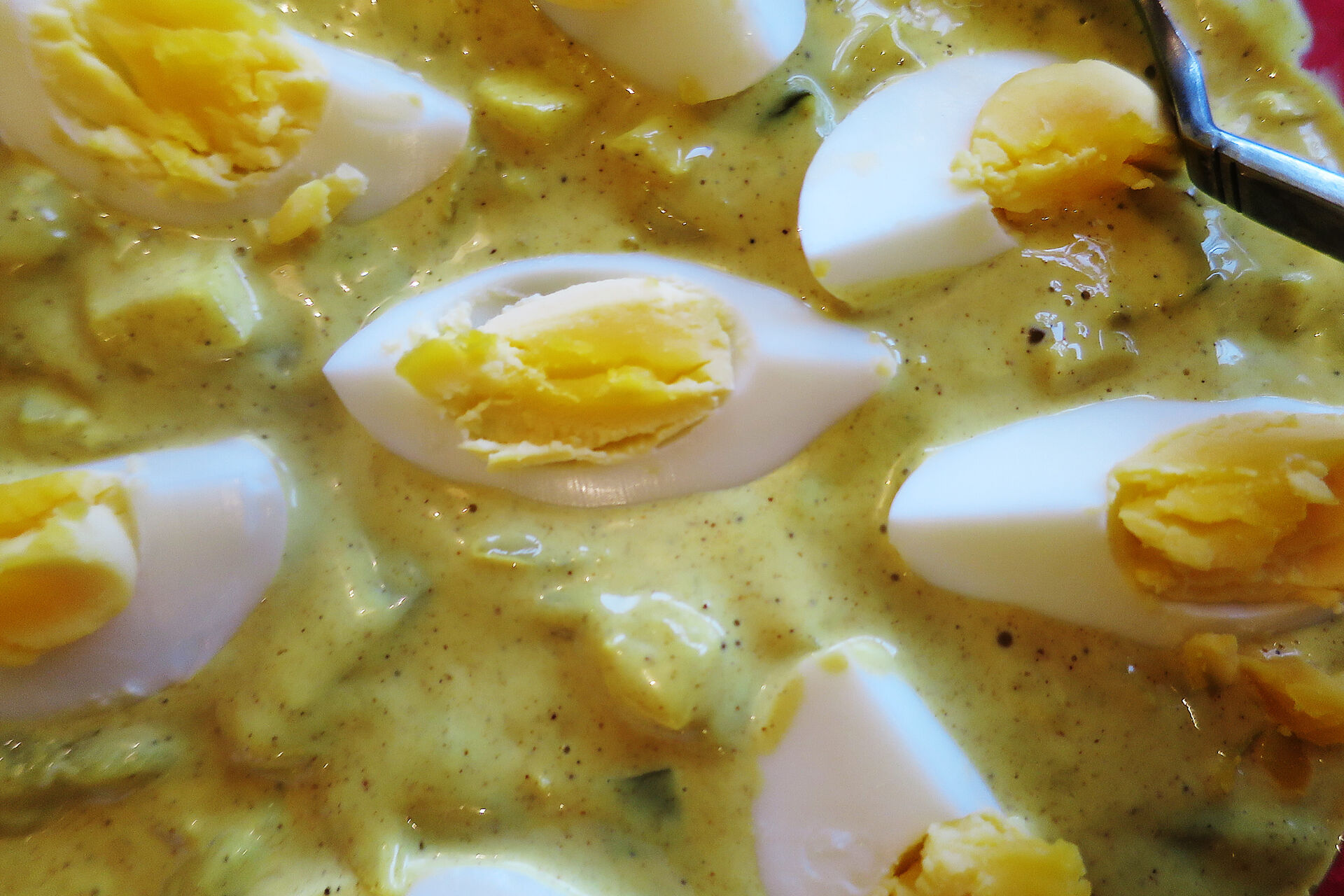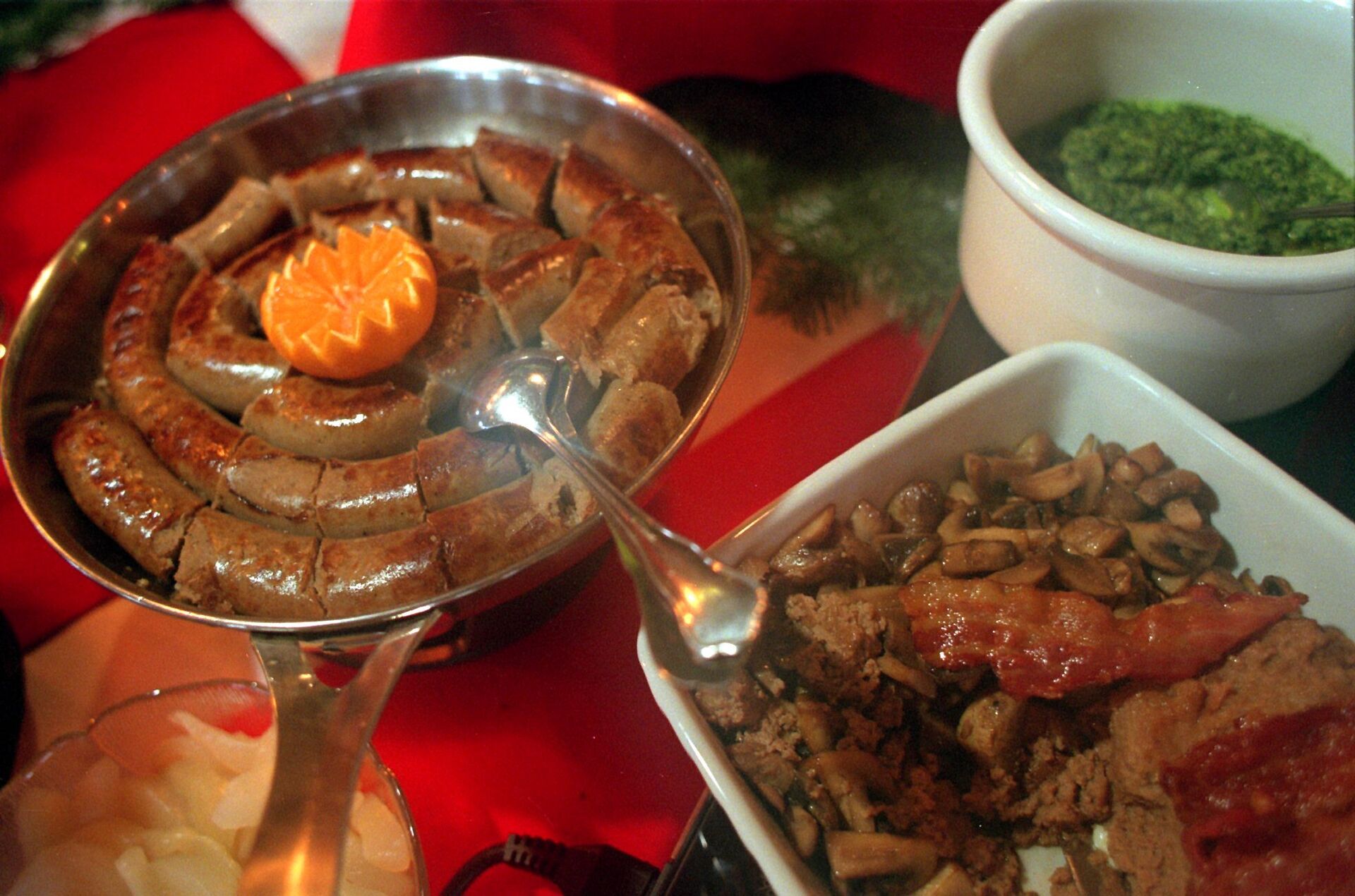“It’s very low budget,” says David Francois Rey, a business student who came up with the idea for the event five years ago.
Rey explained how he made an agreement with local farmers for them to donate their unsold fruit and vegetables after the weekly farmer’s markets on Ingerslev Boulevard.
Volunteers with bicycle trailers pick up the goods each week, and other ingredients like beans, oil and spices are obtained through shop donations or dumpster diving.
French native David Francois Rey started the People's Kitchen in Aarhus five years ago. He now lives in Copenhagen. Photo: Jutland Station
The events take place in the Trøjborg Beboerhus, where the group does not need to pay rent. This means there are basically no costs.
The unofficial theme of the most recent People’s Kitchen on Sunday evening was apples. The farmers had donated a huge box of fresh apples, so participants cooked them in every way they could think of: they diced them and sprinkled cinnamon on top, they ate them raw as snacks before the food was ready, and they baked them into pies and crumbles.
A handful of participants showed up at around 4pm to start cooking, and by the time it was ready to eat, around 30 had showed up. Many were international students, but there were a number of Danes and middle-aged people as well.
Peter Larndorfer, an international student, pours a homemade dressing over a green salad. Photo: Jutland Station
“The type of people going there are not necessarily people in need. Some people come and are on really low incomes, or homeless, some people are retired and don’t get so much money as pension,” Rey said.
“There’s a big mix of many different types of people, cultures and backgrounds.”
The final dinner featured food that was mostly green – a bright green beverage made from kale and citrus fruits, two different green salads with rocket and spinach and green soup. There was some international food as well.
Regular participant Ramona August, who also made a short documentary about the initiative (see below) made a white bean paste that resembled hummus, and an African student made a traditional flat bread.
New foods were invented, such as fried kale with peanut butter, and classics were resurrected, like roasted carrots with herbs. All of the dishes were vegetarian, and most were vegan as well.
Rey, who is originally from France, became interested in reducing food waste when a friend who worked at a supermarket showed him how much food gets thrown away.
Participants chop kale. Photo: Jutland Station
“I think it’s very sad that some people are starving in one place and then others are throwing out tons of food,” Rey said.
He was then introduced to dumpster diving, or ‘reclaiming food’ as he calls it. Eventually he decided to go straight to the source of the food, and talk to the farmers themselves.
“I thought, rather than going in the back [of supermarkets], at night, it’s much more friendly to actually include people,” Rey said.
A volunteer at the People's Kitchen. Photo: Jutland Station
Rey used techniques taught to him at the business school in order to present his proposal in a convincing way. His logic was that there is a high correlation between poverty and hunger and violence and crime, so solving one problem would fix the other.
“I think it’s good to address problems, but we often look at the symptoms … and we are missing the root cause of the system,” Rey said. “When it comes to food waste, the root cause is within the current market monetary structure.”
Originally from Marseille, a city with high rates of crime, Rey had seen firsthand the effects of hunger on individuals.
“If we don’t get food within three days, our behavior will change,” he says. “It was really easy for me to use empathy and understand that, okay, if I had a family to feed and I had no access to money for the necessities of life, then I would be very tempted to … steal food.”
The farmer met Rey’s proposal with optimism, and the People’s Kitchen has been meeting regularly for five years since.
By Alison Haywood
The People’s Kitchen meets every Sunday at the Trøjborg Beboerhus in Aarhus around 4pm. Anyone is welcome to participate.
Alison Haywood is an editor at the English-language online magazine Jutland Station, located in Aarhus, Denmark. This piece is also set to appear in Jutland Station.





 Please whitelist us to continue reading.
Please whitelist us to continue reading.